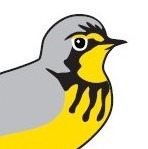Citizen Science
Every single day, Citizen Scientists (volunteers) like you share their energy, skill, and bird sightings through Birds Canada’s research and monitoring programs–and this action helps inform conservation action!
When you volunteer your time to track the health of bird populations, and make your observations count for science, you are providing a tremendous service to the birds and biodiversity that we depend on. Your Citizen Science data, combined with research and monitoring projects across Canada, help us understand how changes in our landscapes are affecting wild bird habitats and populations and, in turn, inform decisions about conservation priorities.
Our Citizen Science programs offer engaging hands-on learning opportunities, create meaningful connections with the natural world, and foster heightened levels of environmental responsibility in new generations of scientists, leaders, and mentors.
Over the course of a year, tens of thousands of Citizen Scientists of all ages, abilities, backgrounds, and levels of birding experience share their sightings to help inform conservation action. Some opportunities are terrific for beginners and you can determine just how much or how little you participate, while others are geared towards more advanced birders with specific requirements and timeline expectations. No matter how involved you can be, there is an opportunity for you!
Project FeederWatch
Are you feeding birds in your backyard this winter? Project FeederWatch turns your love of birds and bird feeding into vital scientific discoveries! Or if you’re just starting to get to know your birds, Project FeederWatch is perfect for beginners. The program is a winter (November-April) survey of birds that visit our feeders at backyards, nature centres, community areas, schools, and other places across North America. Participants like you periodically count birds you see at your feeders and send your counts to Project FeederWatch. All bird lovers are welcome, no matter your age or skill level. And you can participate for as little as 15 minutes every two weeks!
“FeederWatchers” often tell us how much joy the program brings by getting to enjoy beautiful birds throughout those long winter months. Some people have even been participating for more than 30 years!
Project FeederWatch
Welcome! Project FeederWatch is a critical research project to help winter bird populations. The project is funded by our caring members who also submit their backyard sightings for data analysis.
You can participate in Project FeederWatch when you join as a Birds Canada member or renew your membership. Your donation of any amount makes you a member and your membership is valid for the rest of that year. If you give $50 or more, you will also receive our exclusive BirdWatch Canada magazine.
Top 6 Ways To Help Birds
- Learn About Birds. Learning to identify birds is one of the best ways to connect with the natural world, and is the first step toward taking conservation action. You can start by borrowing a bird guide from your library, joining an outing with your local naturalist club, putting up bird feeders, or participating in the Great Backyard Bird Count or Project FeederWatch! You can also check out the Merlin Bird ID App.
- Buy Bird-Friendly. Reducing overall consumption and making ‘greener’ choices reduces your environmental footprint and benefits all wildlife. Think about the foods you buy, avoid food waste, buy food grown as locally as possible, and choose organic when you can.
- Support Conservation. Become a member, donor, or volunteer for birds! You can also join our Citizen Science programs.
- Keep Cats Indoors. Did you know that cats kill more than 100 million birds each year in Canada? Cats are the most significant human-related bird mortality factor in the country. Studies have shown that bells on collars are not effective in preventing cats from killing birds or other wildlife. Keeping cats inside is best for native wildlife, and for the health of your pets.
- Welcome Birds Home. Plant native vegetation that provides cover and food for birds, like certain species of sunflowers and thistles. Tubular, nectar-producing flowers and flowering trees and shrubs attract hummingbirds. Fruiting trees such as mountain ash and serviceberry attract fruit-eating birds such as bluebirds, robins, and waxwings. Many sparrow species enjoy native prairie grasses. Reduce or eliminate the use of pesticides on your property. Clean your bird feeders every two weeks with hot soapy water and a vinegar solution.
- Prevent Collisions. Collisions with windows in residential and commercial buildings kill more than 25 million birds in Canada each year–and the majority occur at houses. You can help by placing bird feeders and bird baths at a safe distance from windows. The general rule is within 3 m (10 ft) of a window so a bird leaving the feeder can’t gain enough momentum to do harm if it strikes the window. Make any windows adjacent to or reflecting a bird feeder and/or the surrounding vegetation bird-friendly. Options include adding window screens, and applying specialized markers or tape spaced in a 5 x 5 cm (2 x 2 in) grid pattern to the outside surface of the window.
For more information about these and other options for reducing bird-window collisions, please visit FLAP.org and Feather Friendly. Note that if you choose to purchase a Feather Friendly DIY product and use Coupon Code BSC2019, Feather Friendly will make a donation to Birds Canada to support bird conservation.

